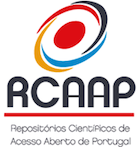A transiarte como forma de expressão ciberestética na produção do vídeo “Tribus”
DOI:
https://doi.org/10.25770/artc.11157Abstract
A arte de transição ou transiarte é entendida como aquela que se expressa no ciberespaço revelando a existência de uma transição estética entre a arte presencial de membros de um grupo e sua reconfiguração em formato digital. A transiarte permite a construção de relações entre as diferentes linguagens artísticas, os sujeitos participantes e as interfaces digitais no ciberespaço. Trata-se de uma forma de ciberarte que é desenvolvida no projeto PROEJA-transiarte, uma pesquisa-ação da Faculdade de Educação da UnB com estudantes de EJA (Educação de Jovens e Adultos), na cidade de Ceilândia, Distrito Federal. A especificidade da transiarte, além da necessidade de estar conectado à Internet para acessa-la, está no processo de criação artística, que é colaborativo. O projeto foi iniciado com a visita dos pesquisadores ao Centro de Ensino Medio 03 – CEM03 onde se realizam as aulas do programa de Educação de Jovens e Adultos – EJA. Vários professores do CEM-03 se disponibilizaram a trabalhar com o projeto Transiarte e grupos de estudantes interessados foram formados pelos professores. Os pesquisadores/formadores da equipe da pesquisa-ação, ajudaram com a instalação de vários softwares que foram utilizados: GIMP (desenho gráfico), Paint, MovieMaker, facilitando assim a utilização destas tecnologias. O grupo de estudantes EJA trabalhou e produziu arte colaborativa que foi então postada no site do projeto www.proejatransiarte.ifg.edu.br. A transição e reconfiguração estética de uma forma de arte tradicional à ciberarte vivenciada pelos estudantes EJA, é um processo que ocorre durante a criação, o design e a produção artística, facilitando a emergência de uma identidade cultural de grupo que se expressa através da transiarte. Neste artigo descrevemos o processo de produção do vídeo Tribus por um dos grupos EJA do CEM-03.Downloads
Published
How to Cite
Issue
Section
License
It is assumed as Author the person (natural or legal) whose name is indicated as such in the work, as embodied practice, or announced to the public by any kind of use or communication. It is recommended that the submitted works do not exceed the total number of four authors. In cases where the number of authors exceeds four, the editors will, ultimately, decide about the acceptance of the submitted work.
TERMS
By submitting a paper to artciencia.com the author accepts, without any kind of reservation, the terms indicated below.
The mere act of submitting a paper is assumed as full comprehension and acceptance, even if in tacit form, of these terms and ignorance about them cannot be invoked.
Authors who publish in artciencia.com, Revista de Arte, Ciência e Comunicação will release their contributions under the Creative Commons Licence CC-BY-NC 4.0: «Licensees may copy, distribute, display, and perform the work and make derivative works based on it only for non-commercial purposes».
The author retains the rights to his work, but its publication in artciencia.com automatically implies the complete and exclusive assignment of copyright to the first edition.
The author is aware that he will not receive any payment / copyright compensation relating to the work submitted despite it is, or not, published.
Similarly, artciencia.com will not charge the author any submission, publishing or distribution fees related with the submitted paper.
The views and opinions expressed in published works are the sole responsibility of the author and may not reflect the editorial policy of artciencia.com.
It should be noted that artciencia.com can reject, by decision of the editors, any submission that manifestly collides with the journal's editorial policy. In such cases the author will be informed of that decision.
After the first publication, the author is authorized to take on additional contracts, independent of artciencia.com, for the dissemination of his work by other means. He must, in that case, to always safeguard the full citation of the original publication.
The author of a published paper is encouraged and has permission to distribute his work by any means, safeguarding the aspects mentioned in the previous paragraph.



